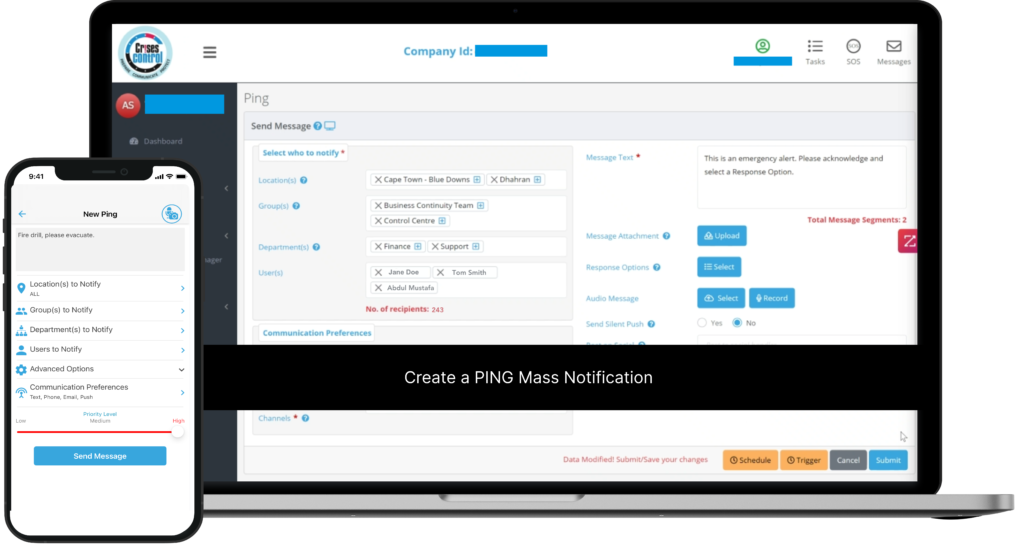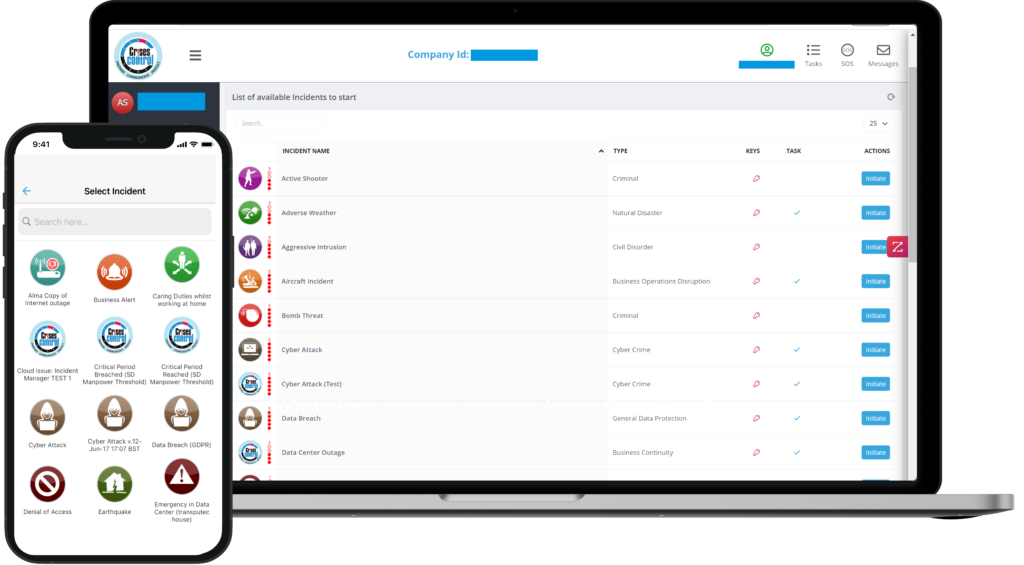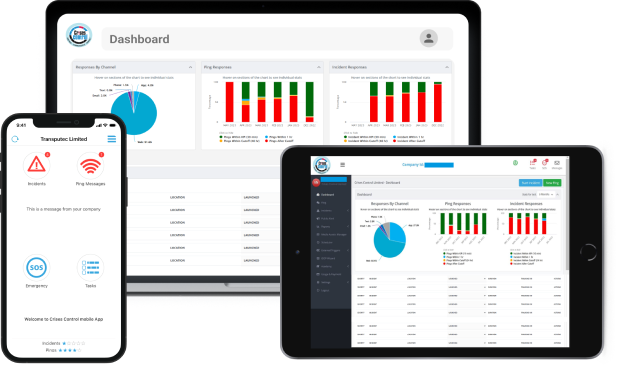Written by Anneri Fourie | Marketing Executive
In today’s unpredictable world, businesses face a multitude of potential disruptions—from natural disasters and cyberattacks to public relations crises and supply chain breakdowns. A well-structured Crisis Management Program is essential for any organisation that wants to be prepared for the unexpected. But having a plan is just the beginning; implementing it effectively during a crisis is the real challenge. This is where Crisis Management Software becomes a game-changer, turning a good plan into a great response.
In this blog, we’ll explore what a Crisis Management Program is, why it’s crucial for your organisation, and the common challenges that can hinder your crisis response. We’ll dive into how Crisis Management Software can streamline every aspect of your program, from incident detection and communication to real-time decision-making and post-crisis analysis. By the end, you’ll understand how the right software can enhance your crisis management efforts, helping you respond swiftly, protect your people, and safeguard your business.
What is a Crisis Management Program?
A Crisis Management Program is a strategic framework designed to help organisations prepare for, respond to, and recover from disruptive incidents. It’s not just about having a plan on paper; it’s about ensuring your organisation can act swiftly and effectively when every second counts.
Core Elements of a Crisis Management Program:
- Risk Assessment and Mitigation: Identify potential threats that could impact your business, assess their likelihood, and develop strategies to mitigate these risks.
- Crisis Planning: Create detailed plans and protocols for different crisis scenarios, ensuring that every team member knows their role.
- Crisis Response: Execute your plans effectively with clear roles, responsibilities, and communication strategies to manage the crisis in real-time.
- Communication: Coordinate both internal and external communication to keep everyone informed, from employees to stakeholders.
- Recovery and Improvement: Once the immediate threat has passed, focus on recovery and conduct a thorough review of your response to improve future readiness.
Why It Matters: A Crisis Management Program helps organisations minimise the impact of disruptions, maintain business continuity, protect their reputation, and most importantly, safeguard their people.
The Challenges of Traditional Crisis Management Programs
Even the best crisis management programs face challenges when put into action. Here are some common issues organisations encounter:
- Delayed Response Times: Without real-time information and automated alerts, teams often struggle to respond quickly when a crisis hits.
- Poor Communication: Miscommunication or lack of information can lead to uncoordinated actions, making the crisis worse.
- Human Error: In the heat of the moment, mistakes are inevitable, especially when processes are manual and rely heavily on individuals.
- Inefficient Recovery: Without a clear analysis of what went right or wrong, organisations miss opportunities to improve their crisis response.
These challenges highlight the need for tools that go beyond traditional approaches. Enter Crisis Management Software.
How Crisis Management Software Can Help You
Crisis Management Software is designed to automate, enhance, and streamline every aspect of your crisis management program. From incident detection to post-crisis analysis, this software provides a centralised platform that empowers organisations to respond more effectively and efficiently.
Key Benefits of Crisis Management Software:
Automated Incident Detection and Alerts
Crisis Management Software can detect potential incidents early—whether it’s a system failure, security breach, or external threat—and automatically alert relevant stakeholders. This automation ensures that the right people are informed immediately, allowing your team to act faster.
Centralised Command and Control
Managing a crisis involves coordinating various teams and resources. The software provides a central command centre where you can oversee all aspects of the response, assign tasks, track progress, and adjust plans in real-time. This level of control reduces chaos and ensures a unified response.
Real-Time Communication
Effective communication is the backbone of any crisis response. Crisis Management Software facilitates instant, secure communication across teams through various channels, including SMS, email, voice calls, and mobile apps. It ensures that everyone, from executives to field operatives, is on the same page.
Interested in our Ping Mass Notification Software?
Efficiently alert everyone in seconds at scale with our Mass Notification System – PING, get the message out fast and ensure rapid response and recovery.

Supporting the Human Element
Crisis Management Software doesn’t just streamline tasks; it supports the people behind the response. By automating routine actions, reducing information overload, and providing clear communication channels, it helps reduce stress and anxiety among team members. Leaders can make decisions confidently, knowing they have accurate, real-time data. Teams work more cohesively, as the software clarifies roles and responsibilities, empowering each individual to focus on their specific tasks without second-guessing.
Data-Driven Decision Making
During a crisis, decisions must be made quickly and based on accurate information. The software’s analytics and data visualisation tools provide real-time insights, helping leaders make informed decisions that can significantly impact the outcome of the crisis.
Post-Crisis Analysis and Continuous Improvement
After managing a crisis, reviewing what worked and what didn’t is crucial for continuous improvement. Crisis Management Software automatically generates reports and audits that detail every action taken, allowing organisations to refine their strategies. For example, if communication delays were identified, the software can suggest optimised notification routes for faster dissemination. If task completion rates are low, automated reminders and escalations can be built into future plans, ensuring no critical action is missed.
Integration with Existing Systems
Adopting new software doesn’t mean starting from scratch. Crisis Management Software, like Crises Control, integrates seamlessly with your existing systems and workflows. Whether it’s linking with your HR database, communication tools, or IT monitoring systems, the software enhances your current processes rather than replacing them, ensuring a smooth transition and minimal disruption during implementation.
Data Security: Keeping Your Information Safe
Security is a top priority, especially during a crisis when sensitive data is exchanged rapidly. Crises Control employs robust data encryption and secure communication channels to protect your information at every stage. Whether you’re handling internal messages or sharing updates with stakeholders, you can be confident that your data is safeguarded against unauthorised access, maintaining the integrity of your crisis response efforts.
How Crises Control Enhances Your Crisis Management Program
Crises Control offers a comprehensive suite of tools designed to optimise every stage of your crisis management program. Here’s how Crises Control stands out:
Incident Management
With Crises Control’s Incident Manager module, you can set up predefined responses for various crisis scenarios. This feature helps automate the notification process and guides your team through each step, ensuring no critical task is overlooked.
Ping Mass Notification System
Crises Control’s Ping Mass Notification System enables you to instantly alert your entire team or specific groups with important information. Notifications are sent via multiple channels—SMS, email, app notifications, and voice calls—ensuring no message is missed.
Task Manager
Managing tasks during a crisis can be overwhelming. The Task Manager module allows you to assign tasks automatically, track their progress, and receive real-time updates, ensuring that your crisis response is well-coordinated and effective.
Incident Plan Builder
Crisis plans should never be static. Crises Control’s Incident Plan Builder allows you to create, store, and update your crisis response plans digitally. Plans are easily accessible to all relevant personnel, ensuring everyone knows what to do when a crisis strikes.
Reporting and Audit
Detailed reports generated by Crises Control provide valuable insights into your crisis response, highlighting areas of success and opportunities for improvement. This continuous feedback loop ensures your Crisis Management Program evolves with each incident.
SOS Panic Button
In moments of personal emergency, employees can use the SOS Panic Button feature to instantly alert security teams or first responders. This enhances workplace safety and ensures immediate action in critical situations.

Interested in our Incident Management Software?
Customise your Crisis Incident Management Software to meet your specific needs with our flexible tools & stay connected and informed during the crisis and incident management process
Conclusion: Transform Your Crisis Management Program with Crises Control
A well-structured Crisis Management Program is crucial, but without the right tools, even the best plans can falter when it matters most. Crisis Management Software, like Crises Control, turns your program into a dynamic, automated, and efficient response system that protects your people, assets, and reputation.
Don’t leave your crisis response to chance. Experience the difference that Crises Control can make in your organisation. Contact us today for a free personalised demo and see how our Crisis Management Software can streamline your crisis management efforts, keeping your business resilient in the face of any disruption.
Request a FREE Demo

